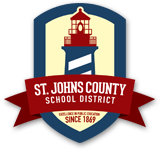From 2007-08 through 2011-12, the St. Johns County School District saw its amount of funds per student decreased by the Legislature. When funding reductions occur, the district remains responsible for managing student growth, maintaining constitutional class-size requirements, opening new schools, and implementing any new legislative mandates.
Although, the 2024 Legislature increased funding for St. Johns County schools by approximately $37.3 million (based on the Florida Education Finance Program – Second Calculation), the financial and economic pressures we face continue. For example, despite the growth in property values of 10.04 percent this year, the capital outlay millage levy remains at 1.5 mills rather than the previous millage levy allowed by law of 2.0 mills. Thus, the ability to raise revenue commensurate with the District’s capital needs is severely restricted. Revenues for the Local Capital Improvement Fund are projected to be $85.4 million, or approximately $7.1 million more than the prior year; in 2007-08 the Local Capital Improvement Funds generated approximately $46.8 million.
Despite an 82 percent increase in revenue for capital projects since 2007-08, the same time the number of students being served increased by 95 percent from 27,737 students in 2007-08 to 50,966 (this amount does not include the Family Empowerment Scholarship students) students in 2024-25. Since 2007-08, the capital outlay budget has lost access to more than $397 million. This revenue loss will continue to jeopardize our ability to maintain existing schools or build new ones as needed. Additionally, the ongoing lack of both operating and capital funding could negatively impact the district’s financial credit rating and its ability to efficiently manage its debt.
On November 3, 2015, to help alleviate the capital funding problem brought on by the aforementioned decreases, the School Board asked the community of St. Johns County to approve a half-penny sales surtax initiative solely for the purpose of funding new construction, renovation/remodeling projects, technology and safety and security measures. The sales tax referendum was passed with more than 60 percent support. This new revenue stream had been steadily growing year over year.
The district’s revenue and expenditure budgets have changed significantly since July 2023. Highlights of the 2024-25 budget process are as follows:
- Increased state & local funding by approximately $37.3 million.
- Per-student funding is $8,927.17, or approximately 3.08 percent more than the prior year which equates to an increase of $266.86 per student. These dollars are earmarked for categorical line items including Safe Schools, Transportation, Class Size Reduction, and the ESE Guaranteed Allocation to name a few. Additionally, dollars are earmarked for new noncategorical line items which were rolled into the Student Base Funding. Even as the “categorical” line item is gone, school districts are mandated to fund the programs those funding categories represent including Instructional Materials, Comprehensive Reading Allocation, and the Classroom Teacher & Other Instructional Personnel Salary Increase Allocation.
- Student population for all students including Family Empowerment Scholarship students is projected to grow by 4.86 percent, or 2,579 students.
- The 2020 Legislature created the Teacher Salary Increase Allocation (HB 641) which, among other things, requires Florida school districts to increase the minimum base salary to at least $47,500, or to the minimum amount achievable based on the allocation. These dollars were rolled in to the base student allocation after the 2023 legislative session.
- The rewrite of the Florida Education Finance Program (state student funding formula), continued student growth, new school openings and other downward pressures on the budget, the district is forced to use dollars to cover operating expenses not anticipated.
- The 2024-25 budget will include over one hundred additional classroom instructional staff units to help our traditional and exceptional students across the district.
Other pressures on the district’s operating budget include the proper funding mechanisms and related plan designs for its self-insured medical healthcare plan, Florida Retirement contributions and digital learning initiatives. - The growing student population in the State-run Family Empowerment Scholarship programs.
- Finally, this will be the ninth year the Legislature has intentionally “rolled back” the Required Local Effort to not raise local property taxes. Long-term sustainability of funding remains a critical concern.
Florida continues to be in the lowest tier in the nation in terms of per-student funding for operational needs when compared to other states. As previously mentioned, the funding did increase for 2024-25; however, the state has a long way to go to restore Florida K-12 funding to the 2007-08 level.
The constraints on the District’s capital and maintenance expense budgets are significant and cannot be emphasized enough. This situation is directly attributed to two key factors: first, the District’s student population is projected to increase by 4.86% this year. Second, as previously mentioned, there have been several years of declining capital revenue. The 2007-08 capital fund generated approximately $46.8 million. The same capital fund will generate $85.4 million in 2024-25. As a reminder, the Florida Legislature reduced the allowable millage levy from 2.0 mills to 1.75 mills in 2008-09 and then again to 1.5 mills in 2009-10. It currently remains at 1.5 mills for 2024-25. These factors together have created a challenging financial environment for the District, making it difficult to adequately fund capital projects and necessary maintenance expenses.
Although the sales tax revenue added approximately $27.6 million to the capital budget in the prior fiscal year, it is only a fraction of what is truly needed to address the backlog of new construction, technology, safety, and maintenance demands.
In addition, the sales tax revenue also supports approximately $5.6 million in principal and interest payments for the construction of an elementary school and a K-8 school. Of course, this is in addition to the approximate $25.2 million in principal and interest payments for several previously built schools and other projects and is being funded from the 1.5 mill capital outlay levy mentioned above.
Overall, the summary underscores the district’s ongoing financial strain despite recent funding increases, stressing the need for sustainable solutions to support its growing student population and infrastructure demands.
In closing, past performance is a good predictor of future performance. To review our past financial performance, please visit our Financial Transparency web page. There you will find detailed information about your school district’s financial activity.


